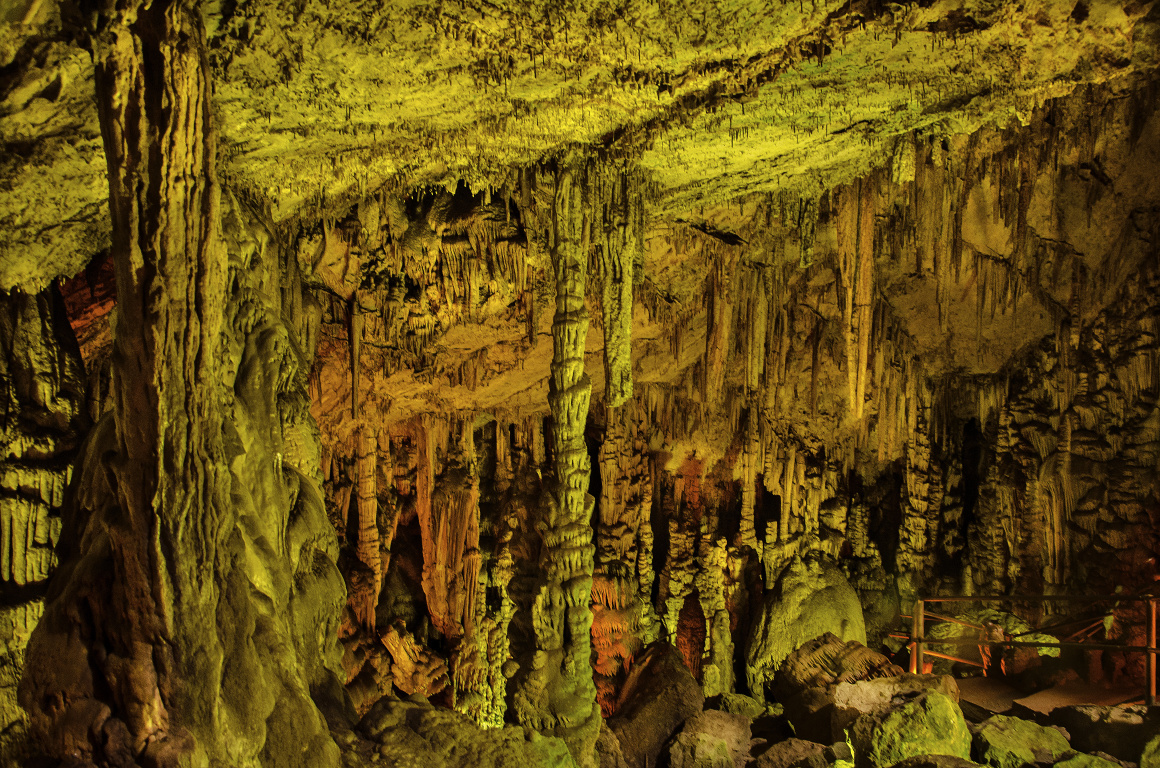Introduction
Crete's natural beauty is the stuff of legends. This island is often described as a miniature continent because of its astonishing range of landscapes – within a few hours you can go from snowy mountain peaks to palm-fringed beaches, from lush gorges to fertile plains and wetlands. The island's unique geography (lying at the crossroads of Europe and Africa) and isolation have fostered rare wildlife and plants found nowhere else. In this section, we'll highlight Crete's most incredible natural attractions: towering mountains and gorges like Samaria Gorge, pristine beaches and lagoons like Balos Lagoon and Elafonissi, dense forests and plateaus, as well as the island's wildlife and flora, including the famous Cretan wild goat and ancient olive groves. We'll also suggest nature-based activities – whether you fancy hiking, birdwatching, or eco-tourism experiences such as visiting marine turtle nesting beaches. With personal insights and useful tips, let's explore the wild side of Crete that will make you fall in love with this island's outdoors. (Many of these natural sites are easily reached if you have a car – see our Car Hire guide – and often top the list of things to do in Crete for nature lovers.)
Majestic Mountains and Mysterious Gorges
Crete's spine is formed by impressive mountain ranges running east–west, giving the island its dramatic highlands. The White Mountains (Lefka Ori) in Western Crete are the tallest and most extensive range – their highest summit, Pachnes, reaches 2,453 m, and there are over 30 peaks above 2,000 m in this range alone. These mountains appear snow-capped until late spring (hence the name “White Mountains”), and even in summer, the sun-bleached limestone can look white from afar. Deep in the heart of the White Mountains lies a moonlike high desert at 1,800 m altitude – a surreal, barren landscape of stone. To the central east stands Mount Ida (Psiloritis), Crete's highest mountain at 2,456 m, steeped in mythology as the birthplace of Zeus. In the east, the Dikti Mountains dominate Lasithi. These ranges are crisscrossed with trails and dotted with caves (Crete has over 3,000 caves!). If you love hiking and sweeping views, a trek in these mountains is a must. For example, a challenging hike up to Timios Stavros Chapel on Psiloritis's summit rewards you with the entire island spread below you – you can see both the Cretan Sea to the north and the Libyan Sea to the south on a clear day.

 'White Mountains, Crete' - Attribution: Tobias von der Haar
'White Mountains, Crete' - Attribution: Tobias von der HaarPerhaps Crete's most famous natural feature is its gorges – spectacular canyons carved by rivers over millennia. Samaria Gorge is the superstar. At 16 km long (13 km of which run within the national park), Samaria is often called the longest gorge in Europe. Starting at the Omalos Plateau (1,230 m altitude) and descending to the sea, it offers an epic one-way hike through ever-narrowing walls. The most iconic section is the “Gates” (sometimes called Iron Gates) where the vertical cliffs on either side soar up to 300–700 m and the gap between them is only about 3–4 m wide – you can almost touch both sides at once! Walking through this towering stone corridor is a humbling experience, as sunlight filters down and a small stream trickles underfoot. Samaria is also a protected biosphere reserve, home to the kri-kri goats (you might spot one perched on a ledge) and rare birds of prey like griffon vultures overhead. Plan on 5–6 hours to hike it at a steady pace, and remember it's downhill most of the way (sturdy footwear is important). At the end, you emerge in the village of Agia Roumeli on a pebble beach by the Libyan Sea – a swim here feels unbelievably refreshing after the trek!
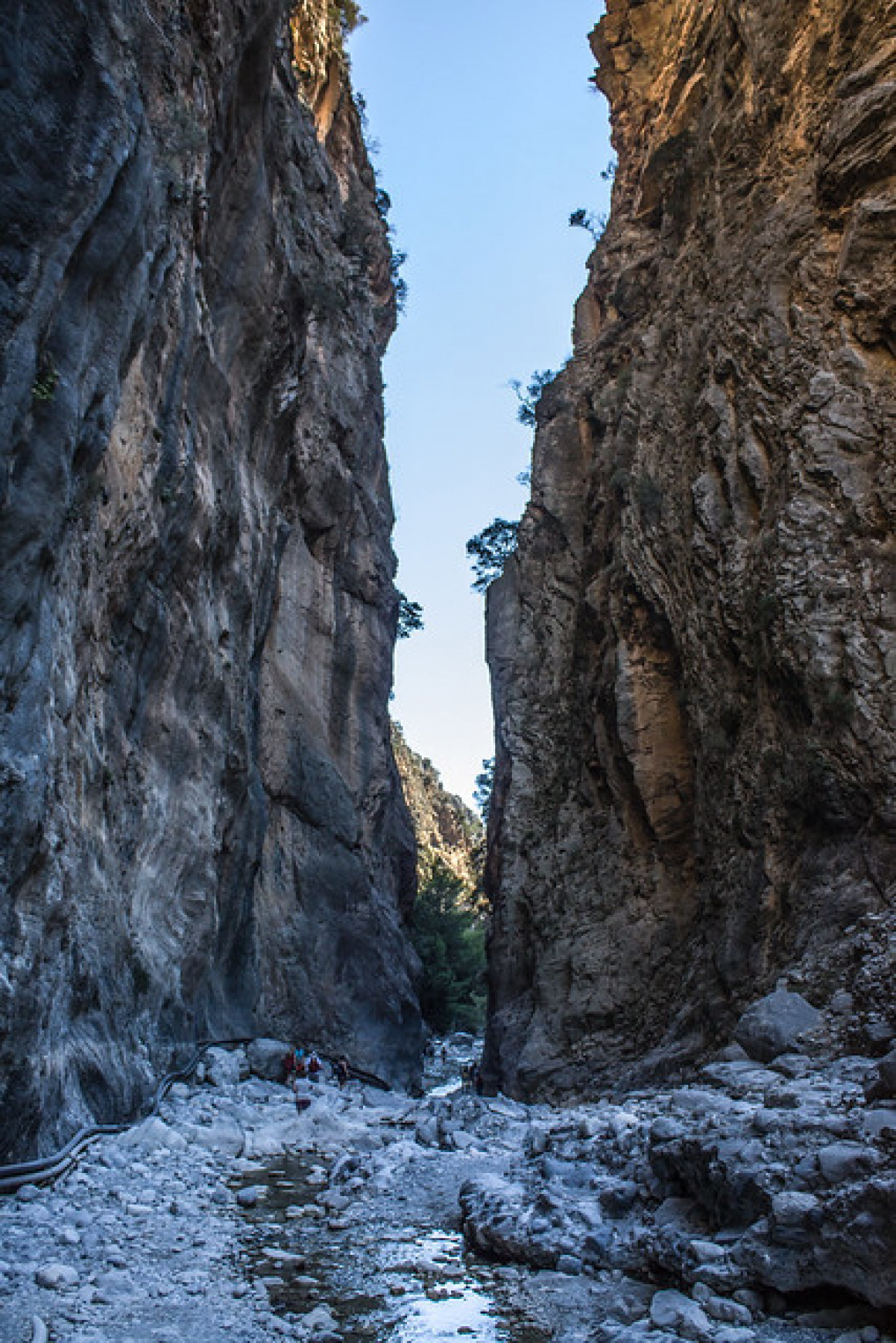
 'Samaria Gorge' - Attribution: Shadowgate
'Samaria Gorge' - Attribution: ShadowgateBeyond Samaria, Crete offers many other gorges worth exploring, each with its own character. Imbros Gorge, near Chora Sfakion, is about 8 km long and much easier to hike (takes ~2–3 hours). Its rock walls also close in tightly at points, and it has a rich wartime history (Allied soldiers fled through Imbros during WWII). Agia Irini Gorge is another lovely hike in the west, shaded by pine and plane trees, and far less crowded. If you're in the east, try the Richtis Gorge which leads to a waterfall and a secluded beach, surrounded by almost tropical greenery. Even tiny gorges like Sarakiniko on Gavdos or Martsalo in the Asterousia Mountains hide hidden wonders like palm groves or chapels. Whether you're an avid hiker or just up for a nature walk, Crete's gorges provide an intimate way to experience the island's wild interior. Always carry water, start early to avoid midday heat, and inform someone of your plans if going alone. Many gorges have well-marked trails, but you should still be cautious on rocky terrain.
Beautiful Beaches, Lagoons and Coastal Wonders
When it comes to beaches, Crete is unparalleled – you'll find everything from broad sandy strands perfect for sunbathing to remote coves that feel like your own discovery. Perhaps the most striking of all is Balos Lagoon on the northwestern tip. Balos is where you realise nature is the finest artist: the lagoon's shallow waters shine in unbelievable shades of blue and aquamarine, shifting over pinkish-white sands. It's often featured in travel magazines for its otherworldly beauty. You can reach Balos by a scenic boat trip from Kissamos, or drive (carefully) a dirt road to a parking area and then hike down about 20 minutes. Either way, as you approach and get that panoramic view of the lagoon with the island of Gramvousa just offshore, it's a wow moment you won't forget. Swimming in Balos is like stepping into a warm natural pool. The water is shallow quite far out, making it great for families too. Just remember to bring all essentials (water, snacks, umbrella) if driving, as facilities are limited. And please carry out any trash – Balos is a protected Natura 2000 site due to its delicate ecosystem.
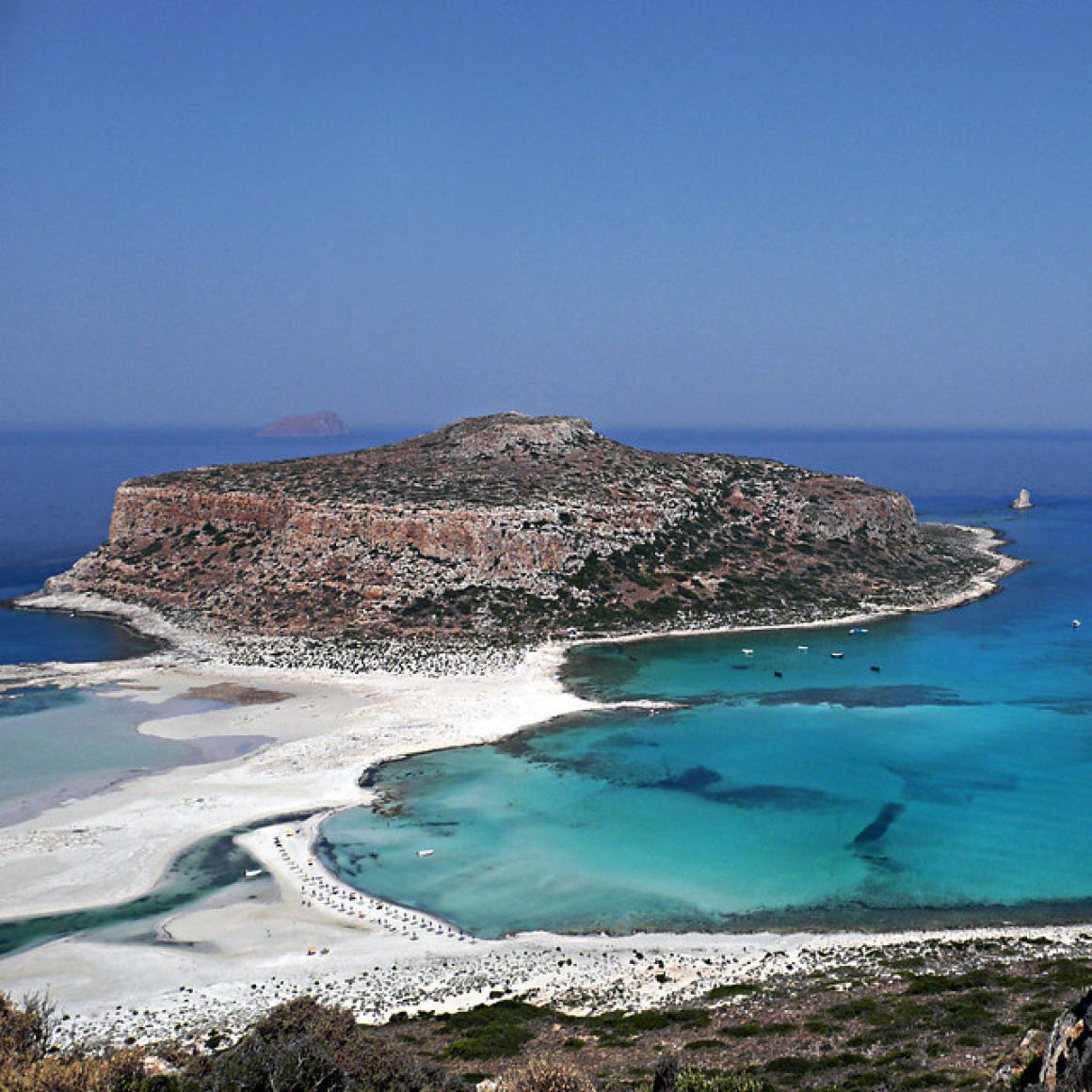
 'Balos, Crete, Greece' - Attribution: pom\\''.
'Balos, Crete, Greece' - Attribution: pom\\''.Another legendary beach is Elafonissi, often called the pink sand beach. This beach consistently ranks among the best in Europe. Once you set foot there, you'll see why. Elafonissi isn't just one beach, it's a series of shallow lagoons and sandbars connecting to an islet. The sand has a rosy hue in many places (courtesy of tiny pink shells), and the water is a clear, lagoon-blue. It's the kind of place where you can wade 100 m out and still be only waist-deep in gentle, warm water. Beyond sunbathing and splashing around, you can also explore the Elafonissi islet – at its far end there's a small lighthouse and chapel, and protected sand dunes where rare lilies grow. Despite its popularity, Elafonissi retains an unspoiled feel away from the main crowds (walk a bit further, you'll find quieter spots). It's also part of a nature reserve, and if you visit between May and September, you're enjoying it in prime conditions (these months offer warm, sunny weather with fewer crowds at the edges of the season).
Crete has no shortage of unique beaches. On the east coast, Vai Beach is famous for its palm forest – the largest natural palm grove in Europe lines this sandy bay, making you feel like you've been transported to the Caribbean. Vai can be busy in high season, but it's large enough to find space, and there are sunbeds and a café above the beach for convenience. Another gem is Preveli Beach with its river and palms – a mix of river swimming and sea swimming in one location!
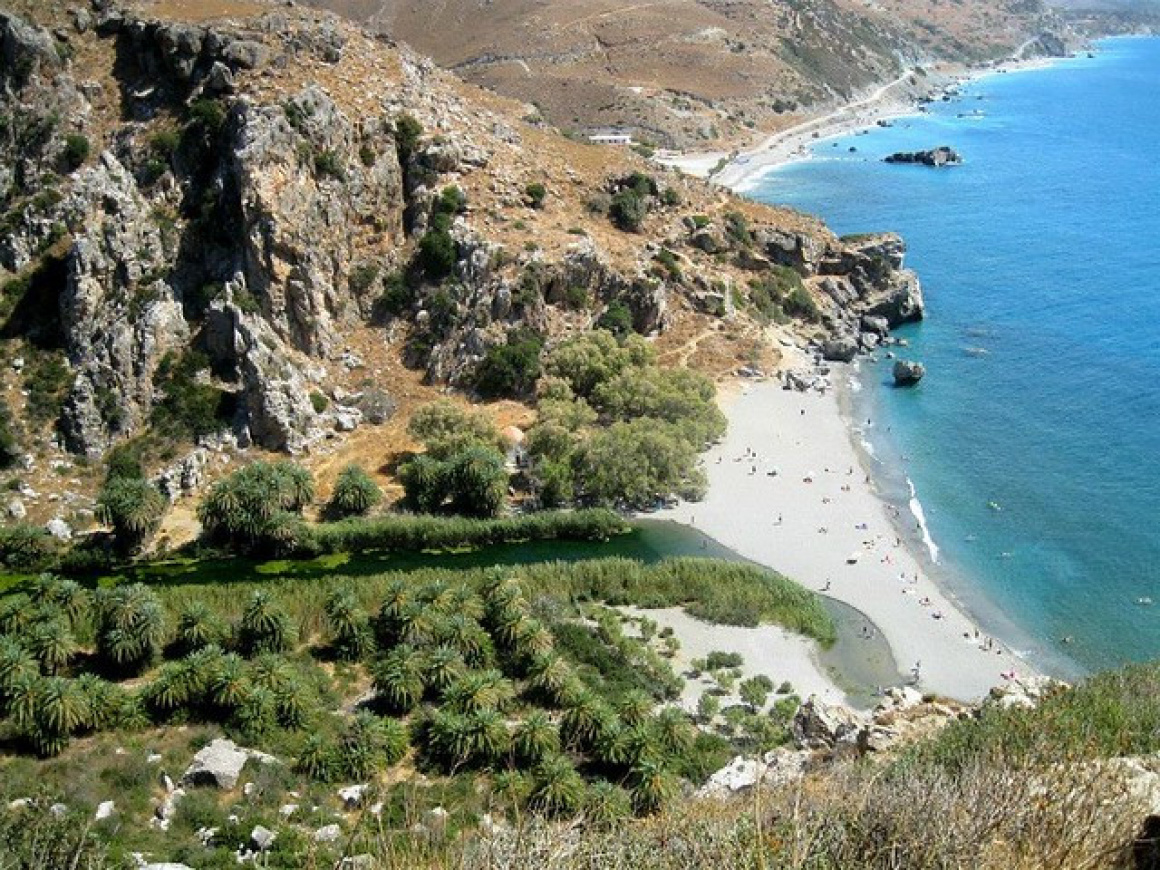
 'Preveli lagoon, Southern Crete, Greece' - Attribution: Madalina Ungur
'Preveli lagoon, Southern Crete, Greece' - Attribution: Madalina UngurFor those seeking offbeat coastal spots, try Seitan Limania near Chania – this is a narrow zigzagging inlet framed by cliffs, where the sea turns a bright turquoise. It requires a short but steep hike down from the parking area, but the dramatic scenery and clear water are worth it. Glyka Nera (Sweet Water Beach) on the south coast is another hidden treasure – as the name suggests, fresh water springs bubble up right on the pebble beach (you can even dig a little hole and get cool fresh water). It's only accessible by boat or a hike along the coast from Loutro, keeping it blissfully uncrowded.
Crete's coastline isn't just beaches – it also has interesting coastal ecosystems. For instance, the Tigani Peninsula around Balos and the Gramvousa islets are breeding grounds for seabirds and a refuge for the Mediterranean monk seal (though those are very rarely seen by casual visitors). On some north coast beaches like Rethymno and Georgioupoli, if you visit at night in summer, you might witness loggerhead sea turtles nesting or hatchlings making their way to the sea – this is a wonderful eco-experience if you get the chance, just be sure to keep a respectful distance and avoid using lights. Snorkeling anywhere with rocky sides (like around Plakias or Matala) can reveal colourful fish, octopuses, even the odd moray eel or sea urchin colonies. And don't forget to look up occasionally – you might see falcons patrolling the coast or goats improbably clambering on seaside crags. Nature in Crete is everywhere, from the sea floor to the highest mountain summit.
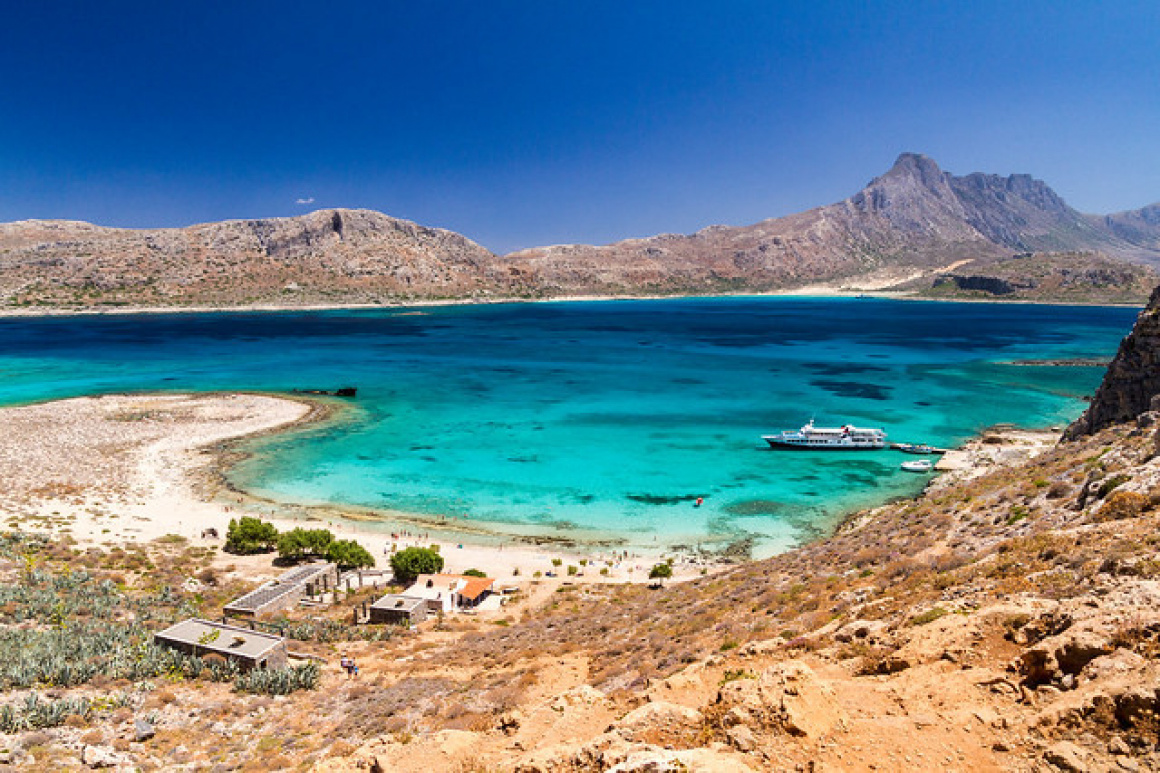
 'Gramvousa' - Attribution: TimOve
'Gramvousa' - Attribution: TimOveUnique Flora and Fauna of Crete
Crete's long isolation and varied habitats have given rise to a host of unique species. One emblematic creature is the Cretan wild goat, locally known as the kri-kri. This agile ibex with curved horns once roamed all over Crete, but now is found mainly in remote areas of the White Mountains and on protected islets (like Agioi Theodoroi near Chania). The kri-kri holds a near-mythical status here – the Minoans revered them, depicting them in art (the famous “Agia Triada Prince” fresco shows a man holding a kri-kri). They were hunted to near extinction last century, but now about 700 or so survive in the wild, thanks to conservation efforts. If you hike through gorges such as Samaria Gorge or others in West Crete, keep your eyes peeled on the heights, you might spot a nimble brown goat leaping across a ledge with unbelievable ease. Seeing a kri-kri in its element is a special treat, a glimpse of Crete's untamed side.
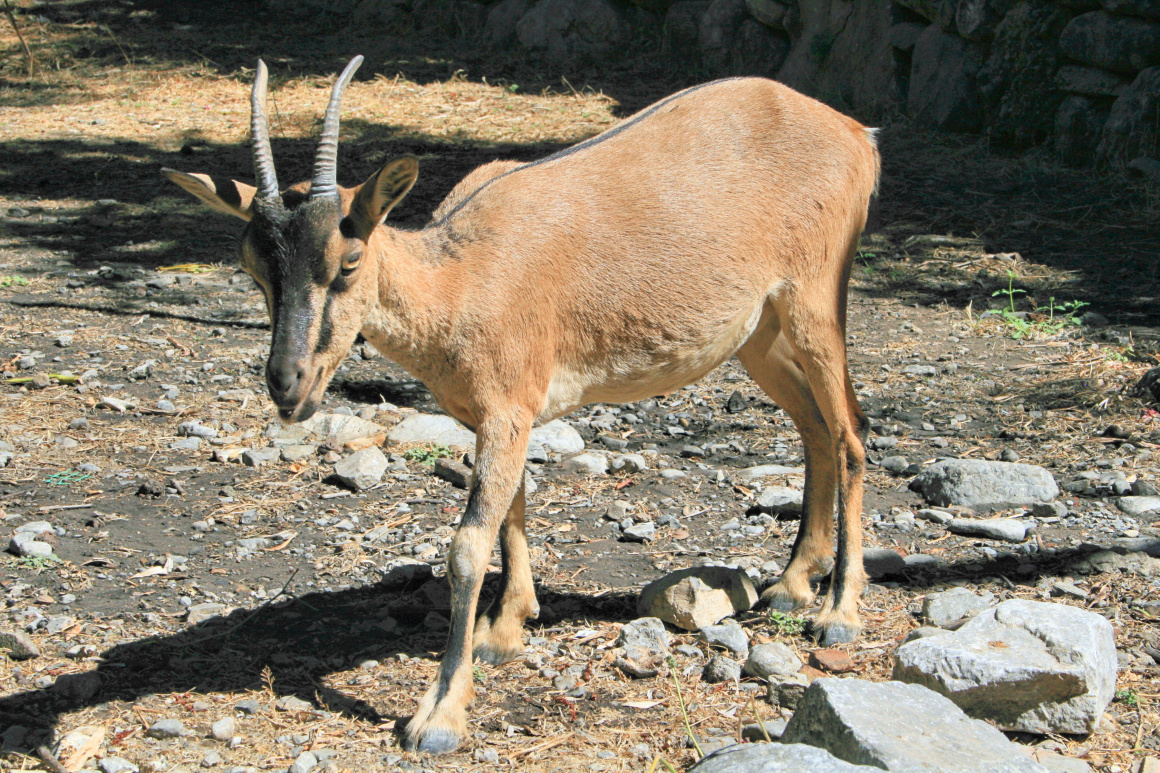
 'Kri-kri (Capra aegagrus creticus) in the Samariá Gorge national park on the island of Crete' - Attribution: Lapplaender
'Kri-kri (Capra aegagrus creticus) in the Samariá Gorge national park on the island of Crete' - Attribution: LapplaenderBirdlife is another highlight. Crete is a critical stopover for migratory birds and home to majestic raptors. Griffon vultures, with wingspans up to 2.5 metres, soar above the gorges – you can often see them riding thermals in places like Samaria, Imbros, or around the Psiloritis range. These scavengers are actually the clean-up crew of the ecosystem, and Crete has one of the few stable populations in Greece. Alongside them, golden eagles and Bonelli's eagles hunt in the mountains. In coastal wetlands like Lake Agia (near Chania) or Almyros marsh (near Heraklion), you might see herons, egrets, and even flamingos during migration. Birdwatchers could also seek out the endemic Cretan blue rock thrush or the handsome lammergeier (bearded vulture), though the latter is extremely rare now. An easier find: the cheeky Cretan wildcat – just kidding, you'll more likely meet plenty of friendly domestic cats sunning themselves in villages!
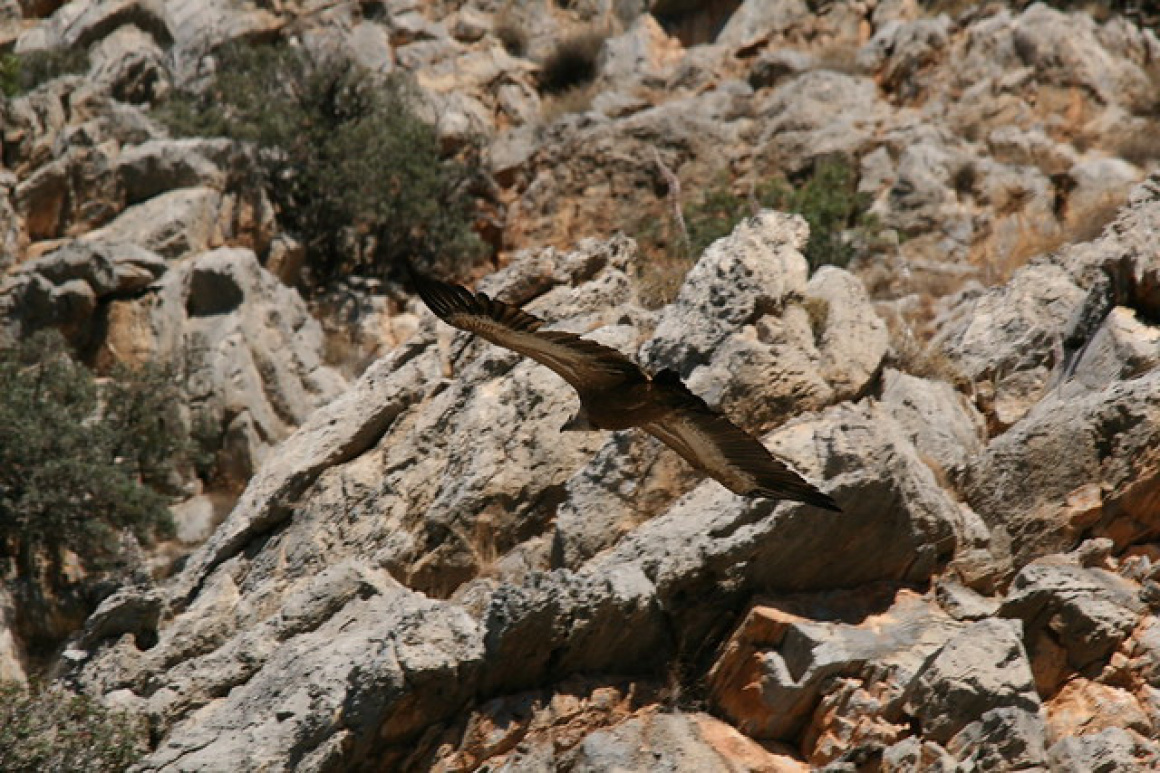
 'Griffon Vultures - Selinari Gorge' - Attribution: Scotland By Camera
'Griffon Vultures - Selinari Gorge' - Attribution: Scotland By CameraCrete's flora is rich with endemic plants – over 200 plant species grow only in Crete. Spring (April–May) is a botanist's dream, the island blooms with wild orchids (some tiny and delicate, hiding in the grass), bright red poppies, anemones, and fragrant herbs. You'll notice wild thyme and oregano everywhere on the hillsides – locals often gather these to use in cooking. Another unique herb is dittany of Crete (or “erontas” in Cretan dialect), a healing mint-like plant that grows on rocky cliffs – according to legend, it was used in potions for love, and even Aristotle wrote about its medicinal properties. It's not easy to find unless you know where to look, but you might see dried dittany sold in herbal shops as “Cretan tea.” Crete's forests, though much reduced from ancient times, still include pockets of cypress, pine, and oak. The Rouvas Forest on Psiloritis is a great example – an oak forest that's lovely to hike in, especially to escape the summer heat.
Worth mentioning are Crete's ancient trees. You'll come across gnarled olive trees that are hundreds, even thousands, of years old. The village of Ano Vouves (west of Chania) has one of the world's oldest olive trees, estimated over 3000 years old, still bearing fruit – a living connection to Minoan times. Imagine the history that silent tree has witnessed! In many villages, giant plane trees (platanos) dominate the main square, providing shade where locals gather for coffee. One plane tree in Krasi (near Malia) is said to be over 2000 years old.
Marine life around Crete includes the aforementioned loggerhead sea turtles (Caretta caretta). They nest on certain north coast beaches – notably a stretch east of Rethymno and around the Gulf of Chania. The waters around Crete are also home to monk seals and dolphins, though sightings are rare. However, taking a boat trip (say, from Plakias or Makrygialos) might reward you with a dolphin pod playing in the distance.
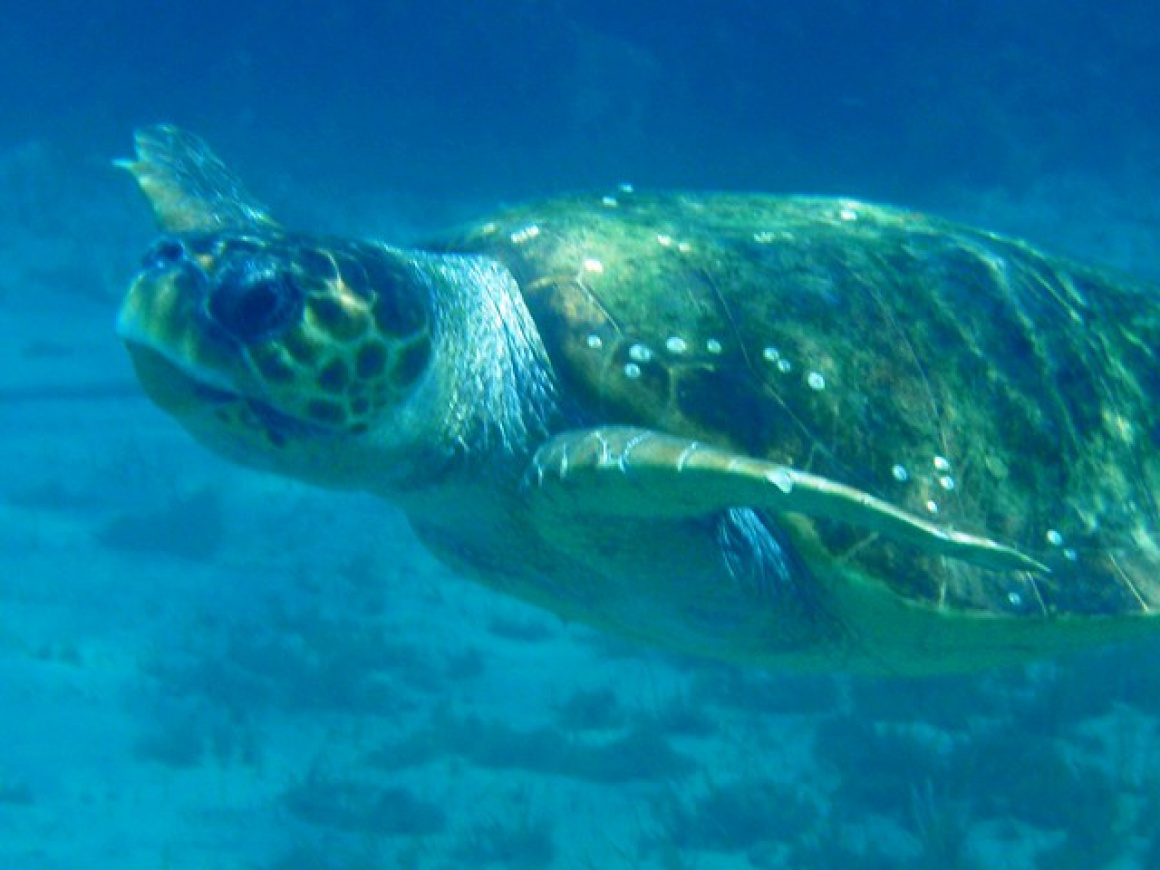
 'Crete - Turtle' - Attribution: We Love Crete
'Crete - Turtle' - Attribution: We Love CreteCrete's commitment to preserving nature is evident in its numerous Natura 2000 protected areas – from the Psiloritis Natural Park to various coastal islets. When enjoying the outdoors, it's good to follow Leave No Trace principles: don't pick rare flowers, don't disturb animals, and carry out your litter. By respecting the island's wild residents, you help ensure Crete's natural treasures endure for generations to come.
Nature-Based Activities and Eco-Tourism Experiences
With such a wealth of natural attractions, it's no surprise that Crete offers plenty of activities for nature lovers beyond just sightseeing. If you're keen to immerse yourself in the environment, consider some of these experiences:
- Hiking & Trekking: There are many great hikes – Samaria Gorge for the bucket list, but also shorter nature walks. There are fantastic coastal hikes like the path from Agia Roumeli to Loutro, which hugs the Libyan Sea with stunning views (and you can always ferry back). In spring and autumn, Crete even has walking festivals. If you prefer guided treks, local eco-tour companies can take you off-trail to see hidden waterfalls or ancient shepherd paths in the mountains. Always carry water and sun protection; the Cretan sun is strong even when the air is cool.
- Birdwatching Tours: If birding is your passion, you can join a birdwatching day tour. Expert guides know spots where you might see vultures nesting or catch migratory birds at wetlands. For instance, Lake Kournas or Bramiana Reservoir in the southeast are bird hubs. Crete’s location means you could spot anything from European rollers to hawks. Don’t forget binoculars!
- Botanical Exploration: Interested in plants? The Botanical Park & Gardens of Crete (near Fournes, Chania region) is a lovely place to spend a few hours. This park was created in an old olive grove and showcases not only Cretan flora but exotic species from around the world. There’s a well-marked walking loop through fruit orchards, tropical flowers, and herb gardens, ending at a farm-to-table restaurant. It’s a gentle way to appreciate Crete’s botanical diversity without venturing into the wild. Another idea: join an herb picking workshop – some local agritourism farms or guides offer walks where you learn to identify wild herbs and greens (a staple of the healthy Cretan diet), followed by a cooking session.
- Wildlife Encounters: While Crete isn’t a safari destination, you can still have meaningful wildlife encounters. The Sea Turtle Conservation project (Archelon) in Rethymno often welcomes volunteers or visitors who want to learn about turtle protection. You might help out in an early morning nest survey or attend an evening presentation on the beach about the turtles’ life cycle. Similarly, the Natural History Museum of Crete in Heraklion is an engaging place for families – it has exhibits on local wildlife, an earthquake simulation room, and even a live aquarium section with species from Crete’s waters. It’s both educational and fun, especially if the weather isn’t great one day.
- Canyoning & Caving: For adventure seekers, Crete’s gorges and caves present exciting challenges. Guided canyoning (with ropes and harnesses) can be done in places like the Tsoutsouros or Ha gorges – sliding down waterfalls and abseiling cliffs will definitely get your adrenaline pumping! If you prefer to go under the earth, Crete has some enormous caves. Ideon Cave (the cave of Zeus on Psiloritis) and Melidoni Cave are easily accessible show caves with historical lore (Melidoni has an ossuary and legends from Ottoman times). Hardcore spelunkers, however, might arrange expeditions to deeper systems like Gourgouthakas, one of the deepest caves in Greece (over 1,200 m deep) – though that’s strictly for experienced cavers. Even a simple visit to Diktaion Cave (with its impressive stalactites) can spark awe at the geological wonders beneath your feet.
- Agritourism Stays: To truly appreciate Crete’s nature and rural life, consider spending a night or two at a countryside eco-lodge or farm stay. There are traditional stone guesthouses in villages like Milias (an eco-retreat in the White Mountains) or organic farms in the Amari or Kritis areas that offer accommodation. Here you can participate in farm activities: grape or olive harvesting (seasonal), feeding animals, or making cheese. Waking up to cowbells and enjoying a breakfast of fresh goat cheese, honey, and mountain tea while overlooking vineyards is a special kind of peace. Plus, your hosts will likely have a wealth of knowledge about local nature – maybe they’ll show you a secret viewpoint or teach you how to spot when rain is coming by the shape of the mountains’ clouds.
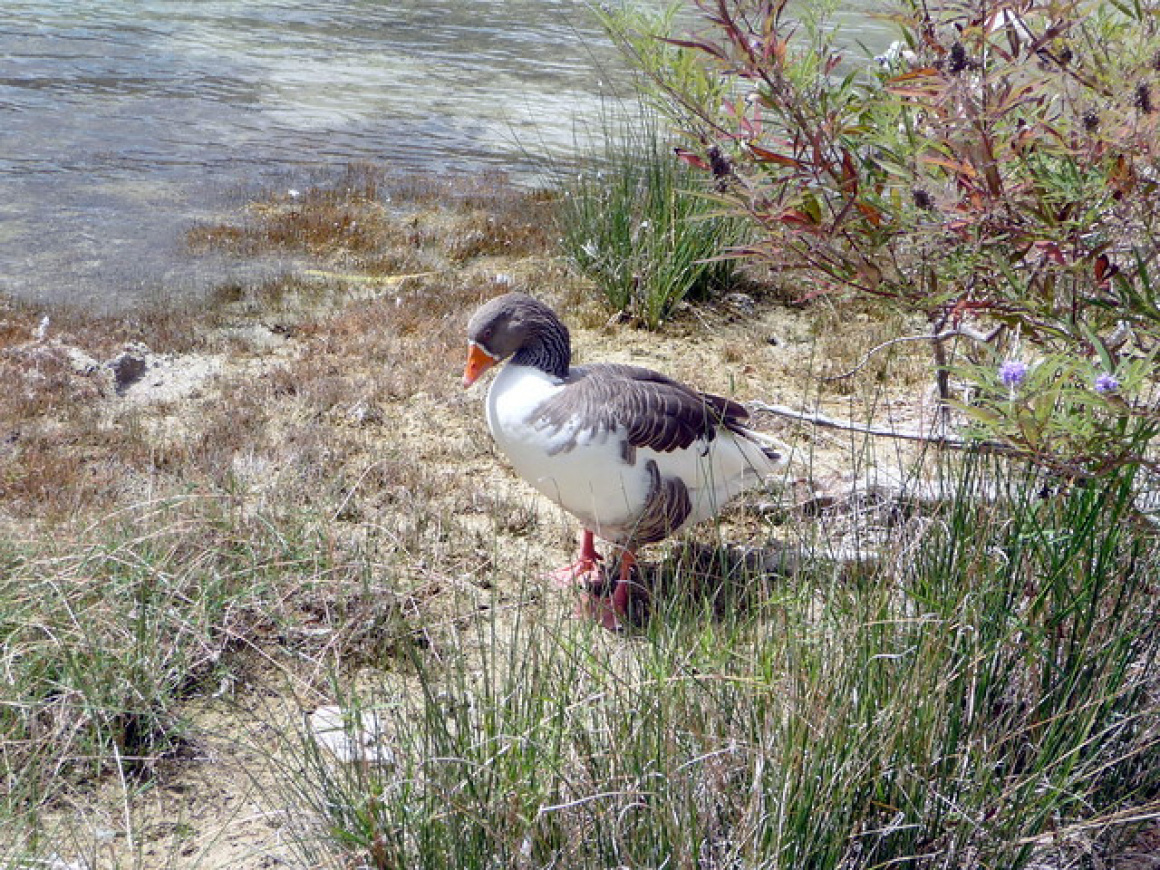
 'Crete2012 077' - Attribution: Pat Neary
'Crete2012 077' - Attribution: Pat NearyFinally, an anecdote to illustrate Crete's natural magic: One early June morning, I set out on a birdwatching hike in the Asterousia Mountains – the arid range along Crete's southern coast. The air was cool and fragrant with sage. As the sun rose, I found myself near a ridge, watching griffon vultures catching the thermals in the growing light. To my surprise, I also saw two bearded vultures (lammergeiers), extremely rare, gliding effortlessly – their silhouettes distinct with diamond-shaped tails. I sat on a rock to avoid startling them and simply watched. The only sound was the wind and the occasional bleat of a distant goat. In that quiet moment, with these huge birds soaring above wild cliffs dropping to the Libyan Sea, I felt a deep connection to Crete's nature. It was humbling and exhilarating at the same time. Later, hiking down, I encountered an elderly shepherd. We chatted (more with hand gestures and smiles than language). He opened his satchel and offered me a piece of dried fig and some nuts – a spontaneous act of hospitality. We shared a snack under a lone olive tree in the middle of nowhere, surrounded by Crete's untamed beauty. That morning, I experienced not just nature but humanity at its kindest, intertwined. Such experiences are why Crete is more than just a sunny holiday island – it's a place that can touch your soul if you let its nature and people welcome you.
Conclusion
Crete's natural landscapes are as diverse as they are enchanting. Whether you find joy in conquering a mountain peak, wandering through a fragrant gorge, lounging on a pristine beach, or observing wildlife in its element, Crete offers it in spades. The island has a way of making you feel small in the grandest way – as you stand under ancient olive trees or at the edge of a vast canyon, you become part of a continuum of nature that has been thriving here for millions of years. We hope this guide inspires you to venture beyond the resorts and into Crete's great outdoors. Pack your hiking shoes, your curiosity, and a spirit of adventure, and you'll discover why Crete's natural beauty is second to none. Enjoy every sunrise, every pebble beach cove, every cool pine-scented breeze on a trail – this is Crete, in all its wild and wonderful glory.
For more practical tips on reaching these natural spots, refer back to Car Hire in Crete. And to balance your itinerary with culture and history, see Things to Do in Crete for the island's top attractions. Happy exploring!


